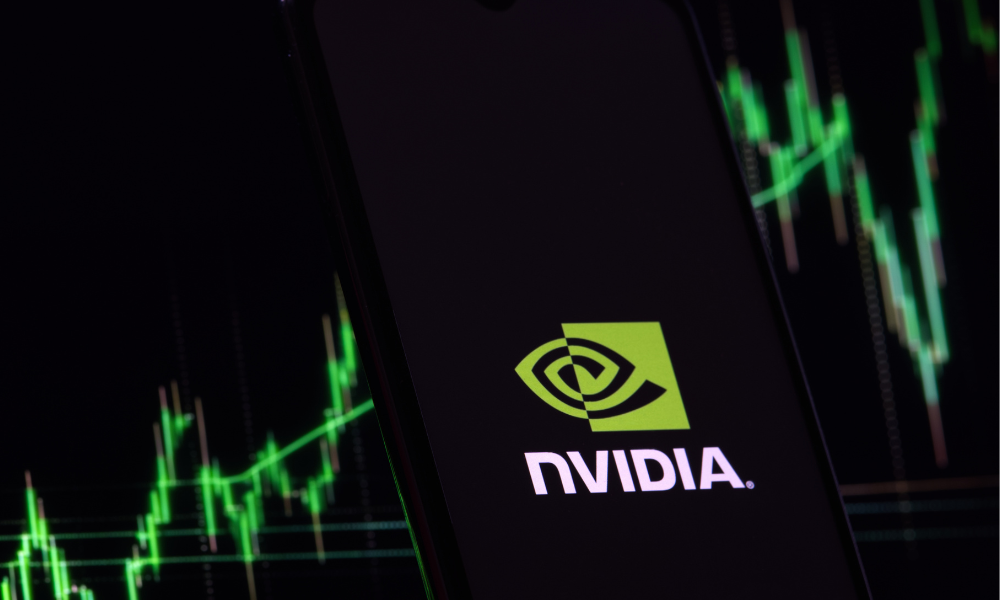

by Ian King and Brody Ford
Jensen Huang, Nvidia Corp.’s chief executive officer, used his annual developer conference to address concerns that the cost of artificial intelligence computing is spiraling out of control.
At the event, Huang unveiled more powerful chips and related technology that he said would provide a clearer payoff to customers. The lineup includes a successor to Nvidia’s flagship AI processor called the Blackwell Ultra, as well as additional generations stretching into 2027. Huang also unveiled Dynamo-branded software that will fine-tune existing and future equipment, making it more efficient and profitable.
“It is essentially the operating system of an AI factory,” Huang said during a roughly two-hour presentation at the company’s annual GTC event in San Jose, California, which touched on everything from robot technology to personal supercomputers.
The conference, once a little-known gathering of developers, has become a closely watched event since Nvidia assumed a central role in AI — with the tech world and Wall Street taking its cues from the presentation. Huang introduced a variety of hardware, software and services during his speech, though there were no bombshell revelations for investors. The stock closed down more than 3% on Tuesday.
Nvidia, once focused on computer gaming chips, has become a tech powerhouse involved in myriad fields. At the event, Huang said the new Blackwell Ultra processor lineup would arrive in the second half of 2025. It will be followed by a more dramatic upgrade called “Vera Rubin” in the latter half of 2026.
The announcements also included:
It’s a pivotal moment for Nvidia. After two years of stratospheric growth for both its revenue and market value, investors in 2025 have begun to question whether the frenzy is sustainable. These concerns were brought into focus earlier this year when Chinese startup DeepSeek said it had developed a competitive AI model using a fraction of the resources.
DeepSeek’s claim spurred doubts over whether the pace of investment in AI computing infrastructure was warranted. But it was followed by commitments by Nvidia’s biggest customers, a group that includes Microsoft Corp. and Amazon.com Inc.’s AWS, to keep spending this year.
The biggest data center operators — a group known as hyperscalers — are projected to spend $371 billion on AI facilities and computing resources in 2025, a 44% increase from the year prior, according to a Bloomberg Intelligence report published Monday. That amount is set to climb to $525 billion by 2032, growing at a faster clip than analysts expected before the viral success of DeepSeek.
But broader concerns about trade wars and a possible recession have weighed on Nvidia’s stock, which is down 14% this year. The shares fell 3.3% to $115.53 by the close of New York trading Tuesday.
The GM news hurt shares of Mobileye Global Inc., which develops self-driving technology. The stock fell 3.5% to $14.44. The company, majority-owned by Intel Corp., had its initial public offering in 2022.
The weeklong GTC event is a chance to convince the tech industry that Nvidia’s chips are still must-haves for AI — a field that Huang expects to spread to more of the economy in what he’s called a new industrial revolution. Huang noted that the event has been described as the “Super Bowl of AI.”
The most important issue facing Nvidia is whether AI capital spending will continue to climb in 2026, Wolfe Research analyst Chris Caso said in a note previewing the event. “AI stocks have been down sharply on recession fears, and while we think AI spending is the last place cloud customers would wish to trim budgets, if the areas that fund those budgets suffer, that could put some pressure on capex.”
On that front, Huang didn’t seem to soothe investors’ concerns. But he offered a road map for future chips and unveiled a breakthrough system that relies on a combination of silicon and photonics — light waves.
Nvidia also announced plans for a quantum computing research lab in Boston, aiming to capitalize on another emerging technology.
Nvidia, based in Santa Clara, California, has suffered some production snags as it works to rapidly upgrade its chips. Some early versions of Blackwell required fixes, delaying the release. Nvidia has said that those challenges are behind it, but the company still doesn’t have enough supply to meet demand. It has increased spending to get more of the chips out the door, something that will weigh on margins this year.
Huang said the top four public cloud vendors — Amazon, Microsoft, Alphabet Inc.’s Google, and Oracle Corp. — bought 1.3 million of Nvidia’s older-generation Hopper AI chips last year. So far in 2025, the same group has bought 3.6 million Blackwell AI chips, he said.
After Vera Rubin debuts in the second half of next year, Nvidia plans to release a version a year later called Rubin Ultra. Vera Rubin’s namesake was an American astronomer credited with helping discover the existence of dark matter.
The generation of chips after that will be named Feynman, Huang said. The name is a likely reference to Richard Feynman, an American theoretical physicist who made contributions to quantum mechanics.
Copyright Bloomberg News

Blue Anchor Capital Management and Pickett also purchased “highly aggressive and volatile” securities, according to the order.

Reshuffle provides strong indication of where the regulator's priorities now lie.

Goldman Sachs Asset Management report reveals sharpened focus on annuities.

Ahead of Father's Day, InvestmentNews speaks with Andrew Crowell.

Cerulli research finds nearly two-thirds of active retirement plan participants are unadvised, opening a potential engagement opportunity.
Barely a decade old, registered index-linked annuities have quickly surged in popularity, thanks to their unique blend of protection and growth potential—an appealing option for investors looking to chart a steadier course through today’s choppy market waters, says Myles Lambert, Brighthouse Financial.
How intelliflo aims to solve advisors' top tech headaches—without sacrificing the personal touch clients crave
